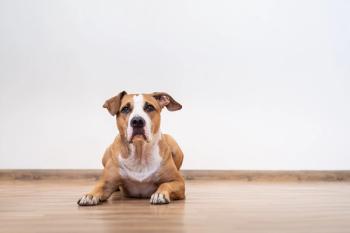
Lecture Link: How to initially assess pets with acute respiratory distress
Some tips for the assessment and treatment of dyspneic patients.
Dyspneic pets are a common part of daily veterinary practice, and finding out what's wrong without making the patient worse can be a challenge. In her presentation "A multimodal imaging approach for acute small animal respiratory disorders," at the 2014 American College of Veterinary Internal Medicine Forum, Carol Reinero, DVM, DACVIM, PhD, shared some tips for the assessment and treatment of these patients struggling to catch their breath.
First, take a close look
Before even touching the patient, Dr. Reinero discussed what can be gleaned from examining from a distance. First, the auditory component: Is the breathing noisy or quiet? Is there stertor (which is typically not life-threatening) versus stridor or wheezing?
Next is the visual assessment: Is there more difficulty on inspiration versus expiration? With inspiratory distress, the thorax and the abdomen both expand, and this pattern is most often indicative of an upper airway disorder such as laryngeal disease or extrathoracic tracheal obstruction (e.g. tracheal collapse, hilar lymphadenopathy, a mass). Pets with expiratory distress most often have lower airway disease. These patients may also exhibit an "abdominal push" with expiration.
Patients with pulmonary parenchymal disease may have a mixed respiratory pattern and may have paradoxical breathing in which the abdomen and thorax do not expand in unison. Patients with pleural disease will often have evidence of inspiratory distress, but this is not always the case, warned Dr. Reinero. Rapid, shallow breathing may be noted as well. Patients with pulmonary thromboembolism may present with any of these patterns but will often have normal oxygen saturation based on pulse oximetry.
On to the physical exam
The physical examination in these patients may need to be brief to minimize stress, but auscultation is key to localizing the problem. Listen to the heart for a murmur. If heart sounds are muffled, they may be secondary to effusion, and thoracocentesis may need to be considered.
Listen to the lungs for evidence of crackles or wheezes. Cats with asthma may have wheezes on auscultation. Perform tracheal auscultation if there is concern that what you're hearing is referred upper airway sounds-toggle back and forth from the trachea to the thorax to localize where the sound is coming from.
Are femoral pulses weak or absent? If they are absent, consider aortic thromboembolism secondary to heart disease, especially in cats.
Important rule-outs
Dr. Reinero also noted that we need to consider other metabolic diseases that may mimic respiratory disorders such as severe anemia, acidosis, pain, and reactions to certain medications.
Newsletter
From exam room tips to practice management insights, get trusted veterinary news delivered straight to your inbox—subscribe to dvm360.




